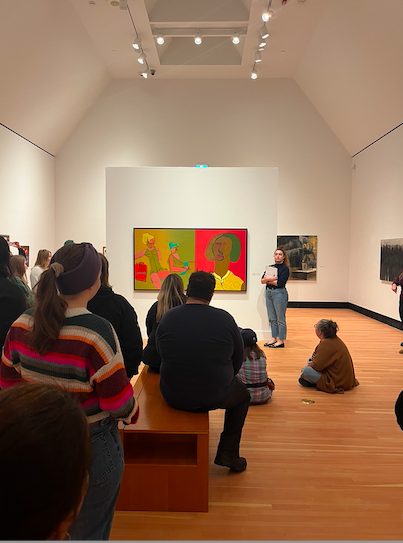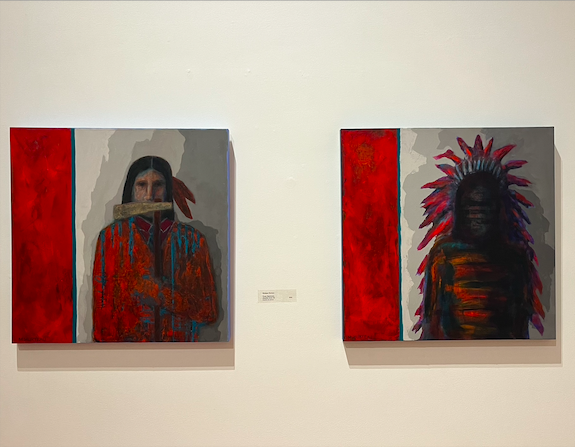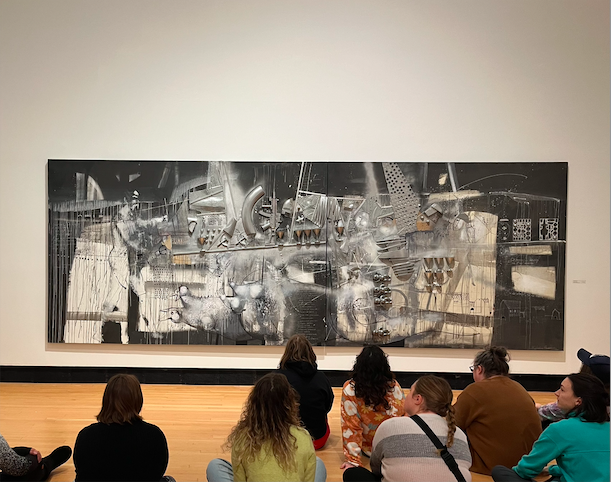Place based learning is an educational approach that connects learners to the history, culture, and community of their local environment. It emphasizes the value of understanding the land and the stories it holds. This approach to education deepens students’ connection to their surroundings. Place based learning creates a sense of responsibility and encourages individuals and communities to actively participate in local issues.
During our recent visit to Two Rivers Gallery, I was reminded of the power of place based learning and its role in shaping our understanding of both the past and present. The facilitator of our gallery walk began by sharing a beautiful land acknowledgment, honouring the traditiional territory of the Lheidli T’enneh. The acknowledgment set the tone for the visit, reminding me of the importance of recognizing the Indigenous peoples whose lands we live, work, and play. The gallery’s structure itself was thoughtfully designed to echo the geography of the region. Its layout is a reflection of the landscape, symbolizing the forestry sector that has been integral to the development of Northern British Columbia. The design not only honours the geography of the area but also pays homage to the Lheidli T’enneh’s connection to the land and its cultural history.
The exhibits in the gallery were so powerful in their storytelling. I was particularly struck by the four paintings of the Indigenous figures, painted by Monique Hurteau. The interpretations of the paintings sparked discussions about colonialism and Canada’s history. Some of my classmates saw the separated forms as symbolic representations of the fragmented Canadian flag, and some interpreted the works as stripping away indigenous identity. It was enlightening to hear everyone’s perspectives of the pieces.
One of the most emotional moments for me at the gallery was when we viewed the “A Walk in Sunflowers” exhibit, created by Mykola Zhuravel. The exhibit depicts multiple devastating scenes of destruction and war in Ukraine. Zhuravel’s powerful works of resistance and the defense against Russian aggression connected to our discussions of modern-day colonialism.
Visiting Two Rivers Gallery showcased the significance of place based learning. The gallery not only reflects the history and culture of the region but also provides a space for visitors to engage with the stories of the land, the people, and the ongoing struggles for justice. It was a reminder of how crucial it is to learn about and from the places we live, and how that knowledge can shape our understanding of the world around us.


